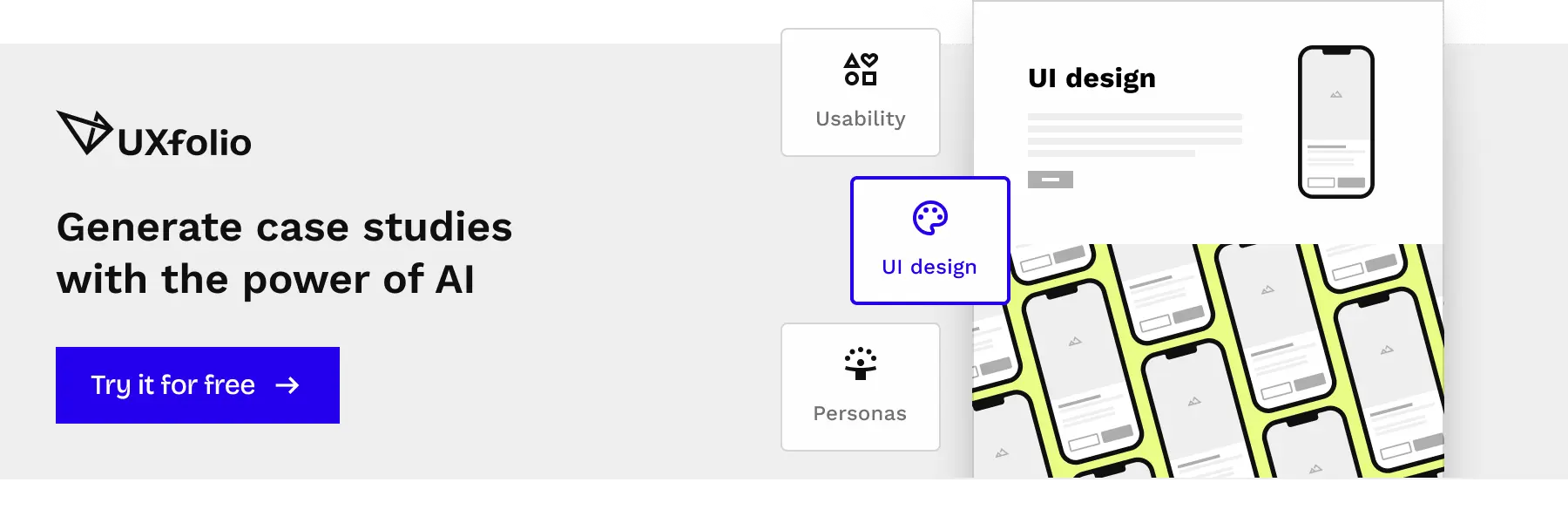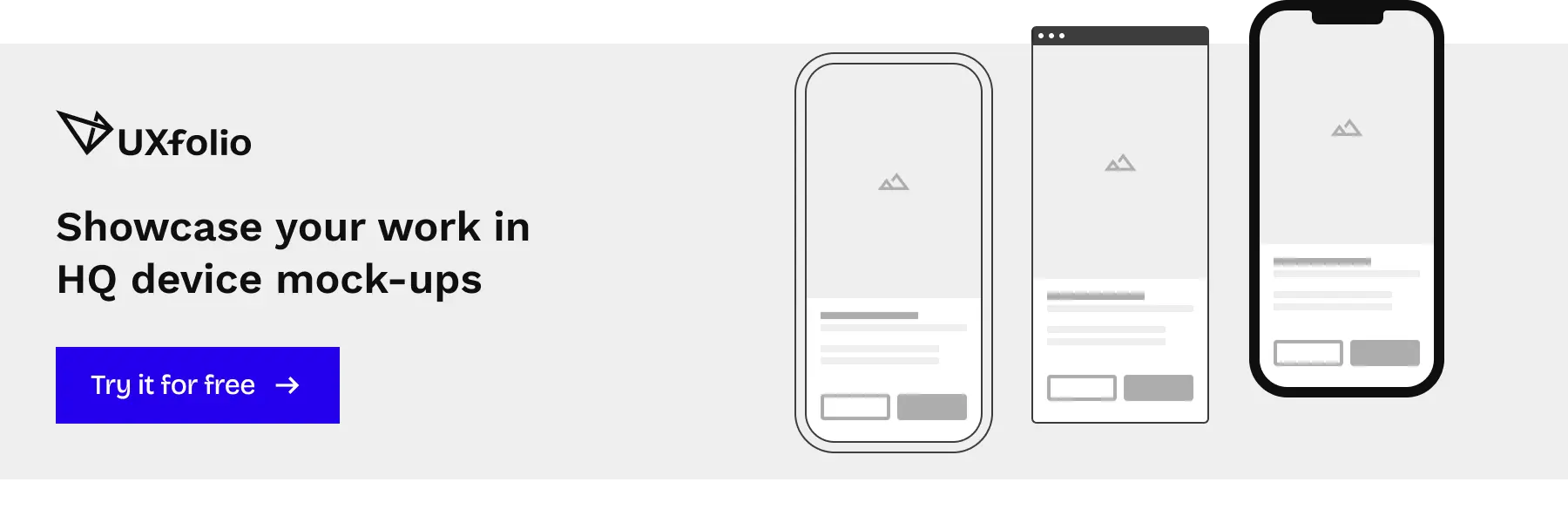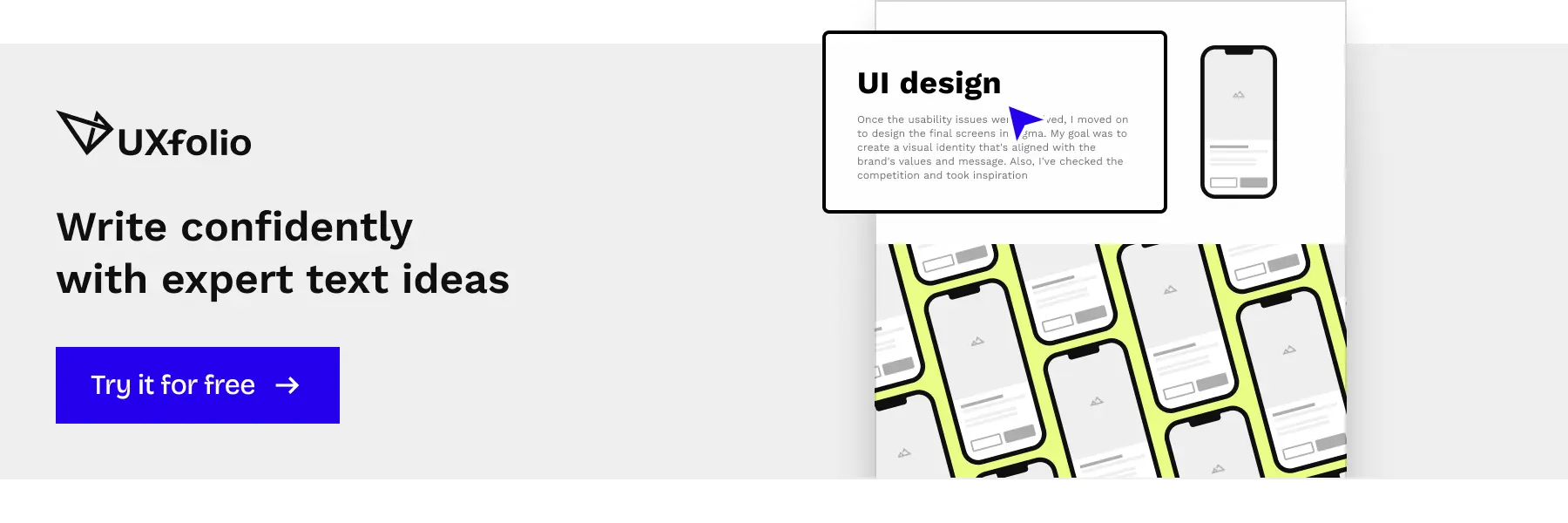You need two things to secure your future in product design: experience and a great portfolio. The good news is that you can check both if you land a product design internship. The bad news is that the competition is growing at a rapid rate, so you have to be savvier than ever.
Hundreds of designers enter the job market every month, from UX bootcamps, online courses, and universities. If you ask these designers about the obstacles they face, most of them list lack of experience and lack of real-world portfolio material.
While an internship might not be part of your designer fantasies, it can provide an incredible boost to your career. You’ll leave with a stronger resumé and projects for your portfolio. So, let’s go through what does it take to land a product design intersnhip:
Who should seek a product design internship?
All soon-to-be product designers can boost their careers by doing an internship. Here’s why:
Starting out in product design is becoming harder and harder. It’s true that the demand for product designers is growing, but so does the supply and – consequently – the competition. Fresh graduates, bootcamp alumny, and career-switchers ar all eyeing the same positions.
If you check the description of those positions, you’ll find that X years of experience and a portfolio showing your best work are must-have requirements. Yes, even on entry-level. It doesn’t require much explaining on how many levels is that anxiety-inducing. You’re probably well aware.

Still, for now, that’s what you have to work with. And you can make it work.
This is where internships come to your rescue: They give you experience and portfolio material based on real-world projects. By covering two of the hardest requirements you’ll multiply your chances of landing your first full-time job.
But internships have other advantages too:
The advantages of internships
Overlooked skills
As an intern, you’ll have the opportunity to polish your product design skills by assisting senior designers in their daily work, and contributing to the design process in various ways. It’s hard to pin down exactly which skills you’ll advance the most, as the scope of an intern’s responsibilities and involvement varies from company to company.
What’s most important is that you’ll see experienced designers in action. Many people don’t realize that product designers do much more than design. They advocate on behalf of the users and convince stakeholders about the value and prospects of their proposals.
Most stakeholders don’t have the same deep knowledge of best practices and methods as product designers. So, it’s up to the designers to present their ideas and findings in a way that energizes a room of laics. This is easier said than done. But the best way to learn about it is to watch seasoned designers navigate a stakeholder meeting.
Building a network for a headstart
Having a strong professional network will make your life easier. In most companies, before a job is posted, the employees are encouraged to refer designers from their own network. Some companies even offer financial compensation for successful referrals. So, the more designers you know, the higher your chances are to be referred.
As an intern, you’ll meet various designers at different stages of their careers. You never know where they’ll be in a few years. The same applies to the rest of the interns. So, be conscientious about forming professional relationships and building your network. This might sound dirty, but you’ll eventually realize that everyone’s doing it. It’s just necessary for survival.
Unpaid mentorship
There’s a growing trend of up-and-coming product designers paying for mentors. That’s because their real value in good menthorship.
The world of product design blogs is trashed with white lies and motivational language with no depth. A good(!) mentor can help you cut through the bs so you can focus on your career goals. They’ll help you realize what’s actually important in a portfolio, what skills you must polish beyond the obvious, how to do interviews, how to give a portfolio presentation, and so. Constructive feedback is gold.
You can get the same as an intern without having to pay. In fact, it’s you who’ll get paid. As an intern, you’ll work extremely closely with senior designers, who’ll help you navigate the real world of product design. Where things sometimes don’t go as planned, deadlines are pressing, and budgets get cut.
With the mentorship of senior designers you’ll learn where you can cut corners, how can you save time while still getting the job done. You can also learn about their career and experiences, allowing you to grow from their mistakes and successes. This is basically what mentorships are all about.
The most important advice for future internship seekers:
Start looking for internships way before you are available to start. Summer internships, for example, are usually posted in January or even before. So, if you can only do a summer product design internship, you should start looking (9-6) months ahead.

Where to look for internships?
Job boards are the go-to platform for openings. However, there are ways to learn about internship opportunities before everyone else does. Consider a few (or all) of the following:
1. Network/meetups with a twist
You don’t need a job to start networking. Reach out to product designers in your area. If they are welcoming, tell them about your passion for product design, your struggles, plans, and ask for their advice. Just don’t be obnoxious while doing it. They might not offer you an internship right away, but you never know when an opportunity opens. And then, there’s a chance that they’ll reach out to you.
You can also attend meetups. But here’s the deal: at a product design meetup, you’ll have a few senior designers or design leads, and a multitude of aspiring designers. So, instead of going for the obvious, try attending meetups of professions close to product design: product management, development, UX research, and marketing.
Your knowledge is still relevant at these meetups, so you can have great conversations while learning about the professionals with whom you’ll be collaborating with. What’s more, your perspective will be unique, as you won’t be in a room with 50 other product designers fighting for the same spotlight.
2. Direct outreach to companies
Let companies know that you follow their output and you aspire to work with them. Inform them about your ongoing studies, and ask them to notify you when there’s an internship opportunity. The rule, again, is to avoid being obnoxious: do not spam these companies and don’t nag on them. Desperation has never made anyone attractive.
3. Masterlist of career pages
This is a simple one. Make a list of companies’ career pages and check them regularly. (If they have a career newsletter, you should subscribe to that to save time). The best thing about this is that you can pick and choose the companies you want to keep an eye on. Some obvious rules apply:
- Go for local business and save the links after setting up all the necessary filters on their careers page (country, field, working hours, etc.).
- The longer your list, the higher your chances are of finding something.
- Check your list around the time when internships are usually posted (January, but this is not set in stone).
4. Direct outreach to hiring managers (specialized in product design)
This is also networking, but much easier for a simple reason: hiring managers want to find talent, and you are potential talent. So it’s a win-win situation. While other networking techniques rely on the goodwill of others, this is much more straightforward.
Hiring managers usually focus on senior positions, as that’s where the money is. Still, they are among the first to know about an open position. And they are in direct contact with the designers they’ve recruited.
5. Connect with or follow designers on LinkedIn
Connect with as many designers in your area as you can and keep an eye on your LinkedIn feed. It’s common that designers share open positions in their departments (which is also a good sign regarding the company’s culture). If you see an opportunity, reach out to the designer to find out more about the job and how you can improve your application.
A practical approach to internships
It’s one thing to land a product design internship, and it’s another to actually benefit from it career-wise. Since it’ll be your first serious position, it’s very easy to just let everything unfold, forgetting that most internships don’t come with a full-time job guarantee. So you have to watch out for yourself, and make the most of the whole experience:
Document your internship
Document milestones throughout the internship. Write down unique professional experiences, revelations, and hiccups. Or, get into the habit of keeping an internship diary. Once you start working on your CV and cover letter or preparing for interviews, you’ll be grateful for all the material. It’ll be a breeze to write or talk about your professional journey as a designer.

Keep case study drafts
Most designers don’t like to work on case studies. Still, there’s no great portfolio without impactful case studies. We create UXfolio to help with the process. But you can also help yourself with just a little effort.
Portfolio material is one of the main reasons to do internships. Realistically speaking, you should have at least 1-2 case studies out of the whole experience. And these will benefit you for a long time.
Case studies are all about storytelling; about obstacles and overcoming them. They also use plenty of visuals to help the readers’ comprehension. While you are working on something as an intern, make sure to document it. Open a fresh case study draft in UXfolio and write down your thoughts, obstacles, and processes. Also, save some screenshots and photos.
Don’t worry about organizing it, or making it all look pretty: You can do that later. And again, you’ll be grateful for all the material.
Focus on what you can’t learn elsewhere (designer-dev communication, communication with stakeholders, shortcuts, etc.)
In school you’ll build a strong theoretical foundation as a designer. You’ll also polish your skills, such as wireframing and prototyping. What you can’t learn in school are things such as how to work in cross-functional teams, how to advocate for design best practices in high-stakes situations, or where to cut corners. These are things that most product designer job interviews will touch on in some way.
Do not focus all your energy on things that you can learn at home or in school. Focus on other aspects of a professional designer’s workday. Listen to how they communicate with other designers, design leads, stakeholders, devs, and whoever else involved in making a product. These are the things that’ll raise your professional value.
Hope you’ve found this article useful! If you want to read more about topics like this, please keep an eye on our blog, or register a UXfolio account to receive our newsletters with examples, tips, and news.
Create a portfolio in UXfolio!
In UXfolio you can create a portfolio for free, and you can have as many case study drafts as you want. Once you are ready, you upgrade to Premium to enjoy all the added benefits, such as portfolio customization, unlimited case studies & portfolios, white labeling, and more. Register today, and start building your career with UXfolio!